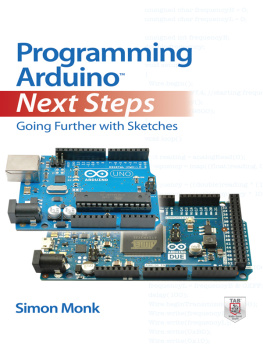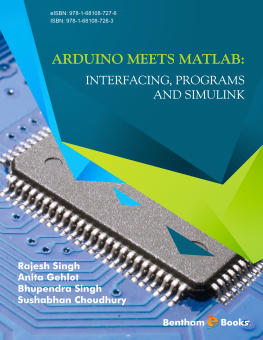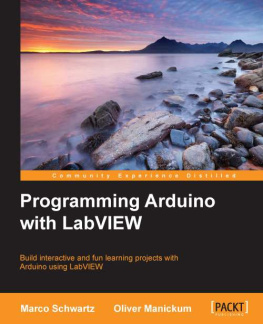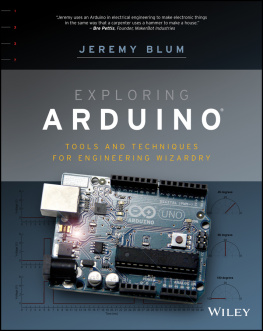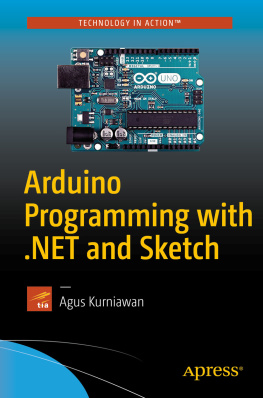Misra Yogesh - Programming and Interfacing with Arduino
Here you can read online Misra Yogesh - Programming and Interfacing with Arduino full text of the book (entire story) in english for free. Download pdf and epub, get meaning, cover and reviews about this ebook. year: 2021, publisher: Taylor & Francis Group, genre: Home and family. Description of the work, (preface) as well as reviews are available. Best literature library LitArk.com created for fans of good reading and offers a wide selection of genres:
Romance novel
Science fiction
Adventure
Detective
Science
History
Home and family
Prose
Art
Politics
Computer
Non-fiction
Religion
Business
Children
Humor
Choose a favorite category and find really read worthwhile books. Enjoy immersion in the world of imagination, feel the emotions of the characters or learn something new for yourself, make an fascinating discovery.

- Book:Programming and Interfacing with Arduino
- Author:
- Publisher:Taylor & Francis Group
- Genre:
- Year:2021
- Rating:3 / 5
- Favourites:Add to favourites
- Your mark:
- 60
- 1
- 2
- 3
- 4
- 5
Programming and Interfacing with Arduino: summary, description and annotation
We offer to read an annotation, description, summary or preface (depends on what the author of the book "Programming and Interfacing with Arduino" wrote himself). If you haven't found the necessary information about the book — write in the comments, we will try to find it.
Programming and Interfacing with Arduino — read online for free the complete book (whole text) full work
Below is the text of the book, divided by pages. System saving the place of the last page read, allows you to conveniently read the book "Programming and Interfacing with Arduino" online for free, without having to search again every time where you left off. Put a bookmark, and you can go to the page where you finished reading at any time.
Font size:
Interval:
Bookmark:
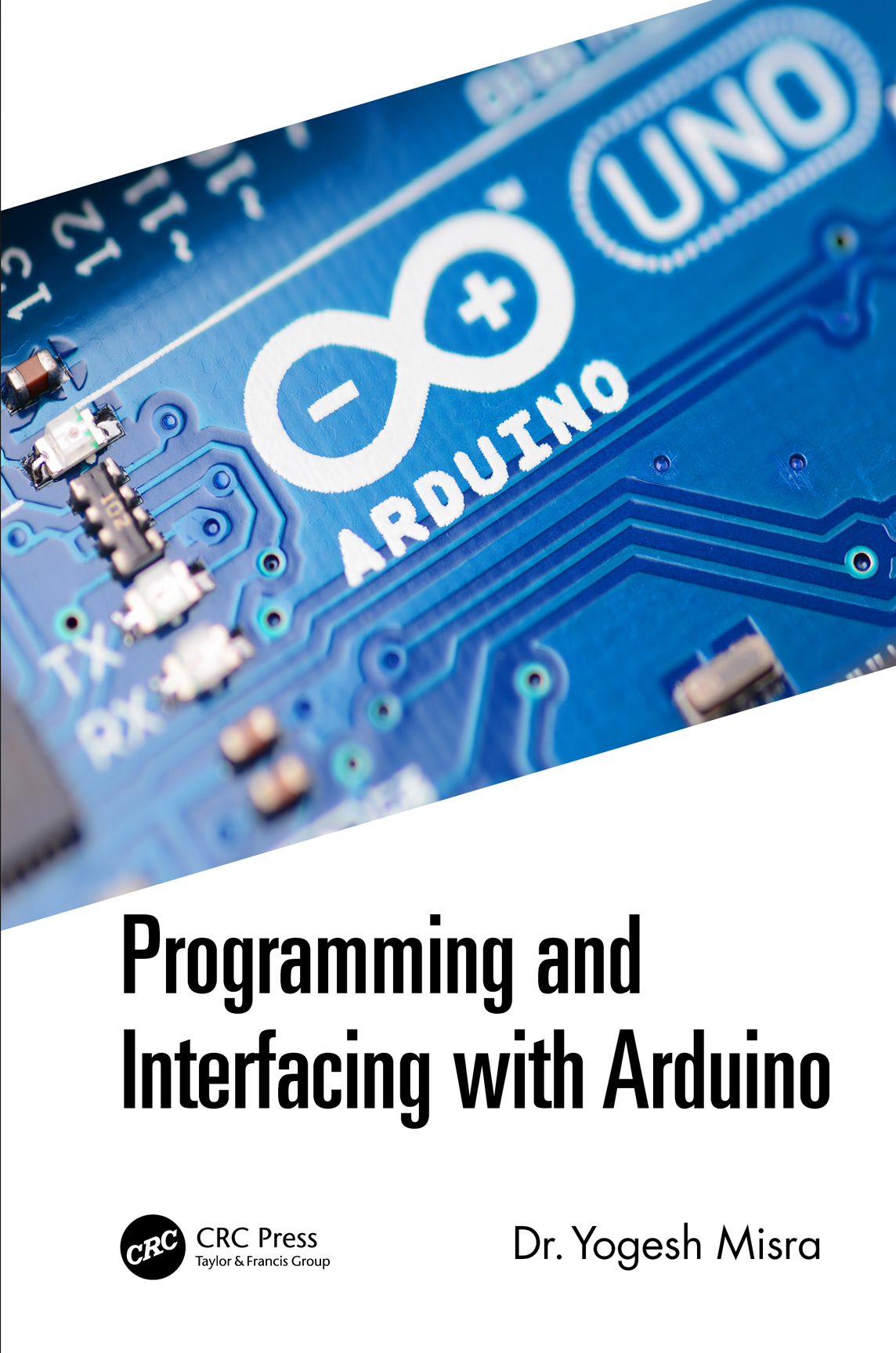
First edition published 2022
by CRC Press
6000 Broken Sound Parkway NW, Suite 300, Boca Raton, FL 33487-2742
and by CRC Press
2 Park Square, Milton Park, Abingdon, Oxon, OX14 4RN
2022 Yogesh Misra
CRC Press is an imprint of Taylor & Francis Group, LLC
Reasonable efforts have been made to publish reliable data and information, but the author and publisher cannot assume responsibility for the validity of all materials or the consequences of their use. The authors and publishers have attempted to trace the copyright holders of all material reproduced in this publication and apologize to copyright holders if permission to publish in this form has not been obtained. If any copyright material has not been acknowledged please write and let us know so we may rectify in any future reprint.
Except as permitted under U.S. Copyright Law, no part of this book may be reprinted, reproduced, transmitted, or utilized in any form by any electronic, mechanical, or other means, now known or hereafter invented, including photocopying, microfilming, and recording, or in any information storage or retrieval system, without written permission from the publishers.
For permission to photocopy or use material electronically from this work, access
Trademark notice: Product or corporate names may be trademarks or registered trademarks and are used only for identification and explanation without intent to infringe.
ISBN: 978-1-032-05985-3 (hbk)
ISBN: 978-1-032-06316-4 (pbk)
ISBN: 978-1-003-20170-0 (ebk)
Typeset in Times
by codeMantra
This book provides a platform to the beginners to get started with the development of application by using Arduino UNO board. The objective of this book is to provide programming concepts of Arduino UNO board along with the working and interfacing of sensors, input/output devices, communication modules, and actuators with Arduino UNO board.
Arduino is an open-source hardware, which can be used to develop embedded systems with the help of open-source software. Arduino has gained huge popularity among the students and hobbyists for making a working model. The reasons behind the popularity of Arduino are its low cost, availability of software, and easy-to-interface possibility.
When someone is working with Arduino, he needs knowledge of three domains. First, he must understand the Arduino hardware board. Second, he must understand the Integrated Development Environment (IDE) required for the development of software, which actually guides the hardware to perform the desired task. Third, he must understand the working principle of various sensors, input and output devices, and actuators, which may be required to gather information from the surrounding for the processing by Arduino. The contents of this book are developed in keeping of the view of providing all information which is required for enhancing the expertise of all the domains required for the development of prototypes by using Arduino and associated peripherals. This book will be helpful in the development of employability skills in engineering undergraduate students.
After carefully understanding the exact requirements of the students and beginners, I am quite confident that easy-to-understand language of this book will make them efficient to learn Arduino. An outstanding and distinguished feature of this book is large number of programs with description and interfacing diagram associated with each program.
This book starts with the explanation of Arduino UNO board and Integrated Development Environment (IDE). Various constructs required for the development of software are also covered. The working principle of various sensors is explained in depth; programming and interfacing examples with Arduino are taken up and finally some moderate-level projects.
Introduction to Arduino UNO Board gives a detailed information regarding various components mounted on Arduino UNO board, IDE, and ATmega328 microcontroller.
Arduino Programming Constructs gives an in-depth understanding of various constructs required for the programming of Arduino. Readers will also learn in this chapter about various operators, data types, and functions, which will be helpful to them when they start developing software for some specific applications.
I/O Devices, Actuators, and Sensors deals with the construction and working of various sensors, input devices, output devices, and actuators. The readers will learn in this chapter the working principle and function of various pins of LED, seven-segment display, liquid crystal display (LCD), temperature sensor (LM35), humidity and temperature sensor (DHT11), light-dependent register, touch sensor, smoke detector (MQ2), rain detector (FC-07), ultrasonic sensor (HC-SR04), soil moisture sensor (YL-69), Bluetooth module (HC-05), GSM module (SIM 900A), switch, keypad matrix, potentiometer, analog-to-digital converter IC, motor driver board (L293D), and relay board.
Interfacing and Programming with Arduino gives detailed information about how to interface input and output devices, viz., switch, keypad matrix, LED, seven-segment display, liquid crystal display (LCD) with Arduino UNO board, and the process of developing application programs for the interfaced circuit.
Arduino-Based Projects covers interfacing and programming concepts with a large number of circuit diagrams of few projects based on Arduino.
All efforts have been made to keep this book free from errors. I sincerely feel that this book proves to be useful and helpful to the students for understanding the interfacing and programming of Arduino. Constructive criticism and suggestions from faculty members and dear students will be highly appreciated and duly acknowledged.
Dr. Yogesh Misra
I would like to express my deep sense of gratitude to Dr. Girish J, Director Education, GMR Varalakshmi Foundation; Dr. C.L.V.R.S.V Prasad, Principal, GMR Institute of Technology, Andhra Pradesh, India; and Dr. M.V Nageshwara Rao, HOD, Department of ECE, GMR Institute of Technology, Andhra Pradesh, India, for their continuous substantial co-operation, motivation, and support; without them, this work would not have been possible.
My special thanks to all my colleagues for helping me in reaching the logical conclusion of my idea in the form of this textbook.
I am indebted to my dear students as the interaction with them helped me a lot in understanding their needs.
Expressing gratitude publicly to wife is almost missing in Hindu society but I would like to extend my sincere thanks and appreciation to my wife Dr. Pratibha Misra for sparing me from day-to-day work for completing this work. I am also thankful to my son Ishan and daughter Saundarya for providing me special ideas about this book.
I acknowledge the support from Arduino for using their product images and data to demonstrate and explain the working of the systems. I thank Taylor & Francis/CRC Press team for encouraging and supporting me continuously to complete my idea about this book.
Utmost care is taken for the circuits and programs mentioned in the text. All the programs are tested on real hardware but in case of any mistake, I extend my sincere apologies. Any suggestions to improve the contents of this book are always welcome and will be appreciated and acknowledged.
I am also very much thankful to all who are directly or indirectly involved in the accomplishment of this task.
Dr. Yogesh Misra
Next pageFont size:
Interval:
Bookmark:
Similar books «Programming and Interfacing with Arduino»
Look at similar books to Programming and Interfacing with Arduino. We have selected literature similar in name and meaning in the hope of providing readers with more options to find new, interesting, not yet read works.
Discussion, reviews of the book Programming and Interfacing with Arduino and just readers' own opinions. Leave your comments, write what you think about the work, its meaning or the main characters. Specify what exactly you liked and what you didn't like, and why you think so.

